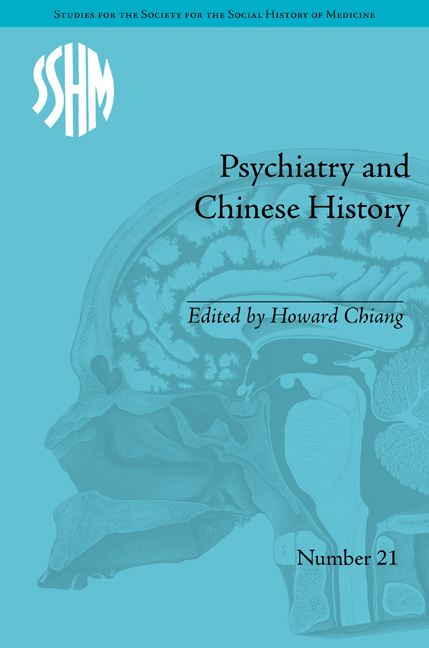Book contents
- Frontmatter
- CONTENTS
- Dedication
- List of Contributors
- List of Figures
- Introduction: Historicizing Chinese Psychiatry
- Part I Historical Precedents
- Part II Missionary Investments
- 4 Psychiatric Space and Design Antecedents: The John G. Kerr Refuge for the Insane
- 5 An Iron Cage of Civilization? Missionary Psychiatry, the Chinese Family and a Colonial Dialect of Enlightenment
- 6 Tropical Neurasthenia or Oriental Nerves? White Breakdowns in China
- Part III Biomedical Modernity
- Part IV New Therapeutic Cultures
- Afterword: Reframing Psychiatry in China
- Notes
- Index
4 - Psychiatric Space and Design Antecedents: The John G. Kerr Refuge for the Insane
from Part II - Missionary Investments
- Frontmatter
- CONTENTS
- Dedication
- List of Contributors
- List of Figures
- Introduction: Historicizing Chinese Psychiatry
- Part I Historical Precedents
- Part II Missionary Investments
- 4 Psychiatric Space and Design Antecedents: The John G. Kerr Refuge for the Insane
- 5 An Iron Cage of Civilization? Missionary Psychiatry, the Chinese Family and a Colonial Dialect of Enlightenment
- 6 Tropical Neurasthenia or Oriental Nerves? White Breakdowns in China
- Part III Biomedical Modernity
- Part IV New Therapeutic Cultures
- Afterword: Reframing Psychiatry in China
- Notes
- Index
Summary
Of all the 12 buildings which have been erected during these two years, nine are dwellings for patients, two are attendants' quarters and one is the bathrooms and cooks' quarters. Two are built of boards, but ten of them are built of the very best of brick with concrete floors and tiled roofs and are in every way most substantial. They should last for fifty or one hundred years, at least, and with little outlay for repairs as they are of very simple design.
The last sentence in the above quotation proved prophetic regarding China's accommodation of psychiatric space. In this chapter psychiatric space refers to the intentional use of architecture to shape therapeutic outcome. More than 100 years have passed since China first built a separate space to house the insane. Also known as madhouses, insane asylums or psychiatric hospitals, knowledge of these built environments have been based on scholarship focused on European and American architecture than China. Unfortunately, China's insane asylums have been over-looked in the literature despite their significant role in the history of psychiatry.
This chapter responds to the paucity of research on insane asylums beyond the Western context. The aim is to examine linkages between Western and Eastern ideas on psychiatric space vis-à-vis China's first insane asylum – The John G. Kerr Refuge for the Insane.
- Type
- Chapter
- Information
- Psychiatry and Chinese History , pp. 71 - 90Publisher: Pickering & ChattoFirst published in: 2014



